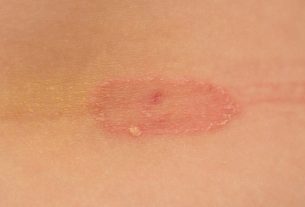Some teas to improve blood circulation, such as green tea or ginseng tea, contain substances with venotonic, antioxidant and anti-inflammatory properties, which help relax or improve the strength of blood vessels, relieving symptoms of poor circulation, such as swelling or feeling of tired or heavy legs, which can be caused by varicose veins or venous insufficiency, for example.
In addition to teas, there are other ways that help improve blood circulation, such as increasing fluid intake, eating a balanced diet, reducing salt consumption and practicing physical activities. See other ways to improve poor circulation.
The use of teas or home remedies to improve circulation should not replace the use of medications prescribed by a doctor, and can only be used as a complement to treatment to improve circulation.

Some examples of teas that can help improve circulation are:
1. Carqueja tea
Carqueja tea is a good option for a home remedy to improve circulation as it contains substances with properties that help reduce the accumulation of fats in the blood vessels, in addition to having a diuretic action that reduces the volume of liquids in the blood vessels, which can help reduce swelling and lower high blood pressure.
Ingredients
- 2 tablespoons of carqueja stems;
- 1 liter of boiling water.
Preparation mode
Place the carqueja stems in boiling water and let it rest for 10 minutes. Strain and drink up to 3 cups per day.
Another way to use carqueja to obtain its benefits is to use carqueja in capsules that can be taken 1 capsule of 300 mg, 1 to 3 times a day.
Carqueja tea should not be consumed by children, pregnant or breastfeeding women. Furthermore, this tea should be used with caution by diabetic or hypertensive people, as it can increase the effect of medications to treat these diseases.
2. Meliloto tea
Meliloto tea, prepared with the medicinal plant Melilotus officinalis is indicated for the treatment of various venous diseases, such as varicose veins or venous insufficiency, as it contains substances such as melitosides, cinnamic acid, saponosides and kaempferol, which help to stimulate blood and lymphatic circulation, reducing swelling and the feeling of heavy legs or tired.
Ingredients
- 1 teaspoon of melilot aerial parts;
- 150 mL of water.
Preparation mode
Boil the water and add the herbs, letting it rest for about 10 minutes. You should drink 2 to 3 cups a day.
Melilot tea should not be used by pregnant or lactating women or people who have liver disease.
3. Horse chestnut tea
Horse chestnut tea, prepared with the medicinal plant Aesculus hippocastanusis rich in escin, a substance with venotonic properties that helps improve blood circulation, increasing the strength of the vein walls and improving blood return.
This tea can be used to help treat varicose veins, varicose veins or venous insufficiency, helping to relieve the feeling of heaviness in the legs, for example.
Ingredients
- 2 sachets of horse chestnut;
- 500 mL of water.
Preparation mode
Put the water to boil. Then, turn off the heat and add the horse chestnut sachets, letting it rest for about 10 minutes. Leave to cool, strain and drink 3 cups after meals.
Horse chestnut tea should not be used during pregnancy, breastfeeding, or by children. Furthermore, this tea should be used with caution by people who have diabetes, digestive problems or skin problems.
4. Green tea
Green tea, made from the plant Camellia sinensishas phenolic compounds in its composition, especially epigallocatechin, which has anti-inflammatory and antioxidant properties, which help relax blood vessels, improving circulation and cardiovascular health.
This tea can be used to help treat poor circulation, in addition to helping to control blood pressure and regulate cholesterol levels, especially bad cholesterol (LDL), which can be deposited in the blood vessels and increase the risk of cardiovascular diseases, such as heart attack or stroke.
Green tea can be used in the form of tea, infusion or natural extract, and should be used with medical advice as excessive use can harm the liver. See other ways to use green tea.
Ingredients
- 1 teaspoon of green tea leaves or 1 green tea bag;
- 1 cup of water.
Preparation mode
Bring the water to a boil, turn off the heat, add the leaves or green tea bag and let it rest for 10 minutes. Strain or remove the sachet and drink immediately. This tea can be consumed 2 to 4 times a day, or as advised by your doctor. However, for people who suffer from high blood pressure, the recommendation is to drink a maximum of 3 cups of green tea per day.
Green tea should not be consumed by children, pregnant or breastfeeding women, people who have insomnia, hyperthyroidism, gastritis or high blood pressure. Furthermore, as it contains caffeine in its composition, you should avoid drinking this tea at the end of the day or in quantities greater than recommended.
5. Ginseng tea
Ginseng tea, prepared with the medicinal plant Panax ginsengis rich in gynaecosides, alkaloids and polyphenols, with antioxidant action, which helps to relax blood vessels and protect blood vessel cells from damage caused by free radicals, improving poor circulation.
Additionally, ginseng increases blood flow, improving oxygen transport to cells. See other health benefits of ginseng.
Ingredients
- 2 g or 1 tablespoon of ginseng powder;
- 300 mL of water.
Preparation mode
Add ginseng powder to water and boil. Then turn off the heat, let it rest for about 10 minutes, wait for it to cool and drink. This tea can be drunk 3 to 4 times a day.
The maximum dose of ginseng is 5 g to 8 g per day, therefore, you should not exceed the amount of 4 cups per day, as it can cause side effects such as agitation, irritability, mental confusion and insomnia.
Ginseng tea should not be used by children under 12 years of age, if pregnant or breastfeeding, by people who have heart disease or asthma, or who are taking medication for depression or diabetes.
6. Rosemary tea
Rosemary tea, prepared with the medicinal plant Rosemary officinalisis rich in substances such as rosmarinic acid, carnosic acid and essential oils, with anti-inflammatory, antioxidant and antithrombotic properties, which can help improve blood circulation and aid in the treatment of varicose veins or thrombosis, for example.
Ingredients
- 1 teaspoon of fresh rosemary leaves;
- 250 mL of boiling water.
Preparation mode
Add the rosemary leaves to the boiling water, cover and let it rest for 5 to 10 minutes. Strain, let cool and drink 3 to 4 times a day.
Rosemary tea should not be consumed by children under 5 years of age, pregnant or breastfeeding women, or by people who have liver disease, as this tea can worsen symptoms and the disease.
Furthermore, rosemary tea may interact with some medications, such as anticoagulants, diuretics, lithium and medications for diabetes or to regulate blood pressure, and therefore, if you are using any of these medications, it is important to consult your doctor beforehand. to drink tea.
Watch the video below with other health benefits of rosemary tea and how to prepare it correctly:

Sign up for our newsletter and stay up to date with exclusive news
that can transform your routine!
Warning: Undefined array key "title" in /home/storelat/public_html/wp-content/plugins/link-whisper-premium/templates/frontend/related-posts.php on line 12
Warning: Undefined array key "title_tag" in /home/storelat/public_html/wp-content/plugins/link-whisper-premium/templates/frontend/related-posts.php on line 13



